Growing red onions in containers is a practical solution for limited garden spaces. Begin with a medium to large-sized pot with drainage holes, ensuring a depth of at least 30 cm (12 inches). Use a mix of two-thirds potting soil and one-third organic compost for optimal growth. Plant seeds 1 cm deep or sets about 2 cm deep. Position in a sunny location, water when the soil’s top inch feels dry, and harvest when tops yellow and fall.
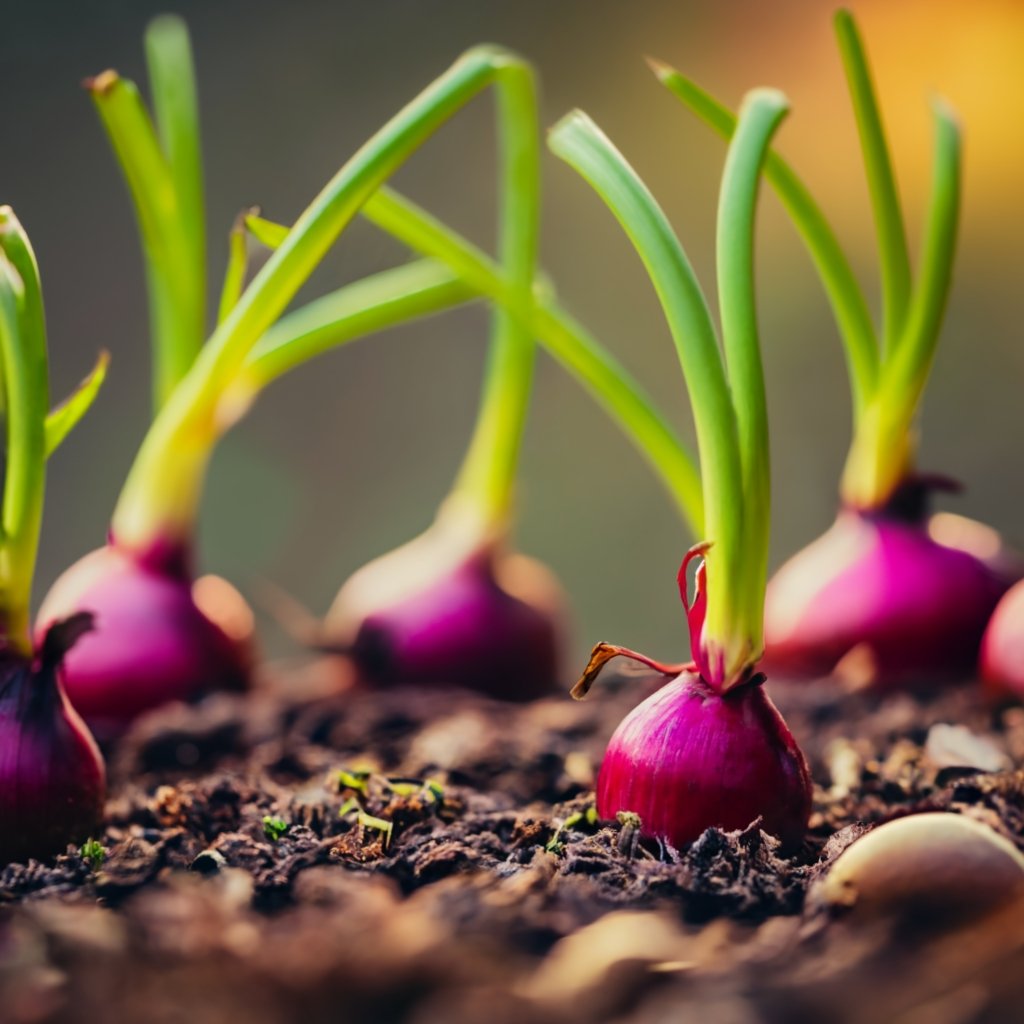
Why Opt for Container Gardening?
Container gardening is not just a trend, it’s a revolution. Especially when it comes to growing onions in containers. But why has it become such a hit among urban gardeners and seasoned cultivators alike?
- Space-Saving: Don’t have acres of garden space? No problem! Containers fit snugly on patios, balconies, or even window sills. You don’t need a farm to have a fresh supply of red onions.
- Controlled Environment: Remember those times when the soil in the ground just wasn’t right? With containers, you’re in charge. You decide the soil mix, the moisture level, and even the container’s location. And let’s face it, onions can be a bit diva-ish. They love that extra attention!
- Less Pests and Weeds: One of the perks of raising your plants off the ground is that you’re less likely to have uninvited guests. Fewer pests and almost zero weeds make for happier gardening days.
- Mobility: Weather acting up? Simply pick up your containers and move them! Whether it’s to catch more sunlight or to protect them from heavy rain, your onions will thank you.
- Year-Round Cultivation: With the right indoor conditions, you can grow onions in containers all year round. Who said gardening was just a summer activity?
So, container gardening: a game-changer, right? But when it comes to growing red onions, there are some specifics you’ll want to keep in mind.
Selecting the Right Pot for Your Onion Plants
So, you’ve decided to dive into the world of growing red onions in containers. Excellent choice! But before you start, let’s talk containers. Picking the right pot can make all the difference in your gardening experience. And no, not all pots are created equal.
Size Matters: When it comes to onions in pots, size is crucial. Onions need space to grow and breathe. A medium to large-sized pot, around 20-30 cm (8-12 inches) in diameter, is ideal for a start.
Material Magic: While plastic pots are lightweight and cost-effective, clay or terracotta pots are breathable, which is great for root health. But remember, terracotta pots can be heavy, so think about where you’ll place them.
Drainage: Non-Negotiable: This can’t be stressed enough: Ensure your container has drainage holes. Waterlogged soil is a no-no for onions. They like moisture, not a swimming pool. So, those holes at the bottom of your pot? They’re your onion’s lifeline.
Depth Deets: A pot’s depth is just as crucial as its width. Aim for a depth of at least 30 cm (12 inches). This gives the onions enough soil to anchor their roots and grow without constraints.
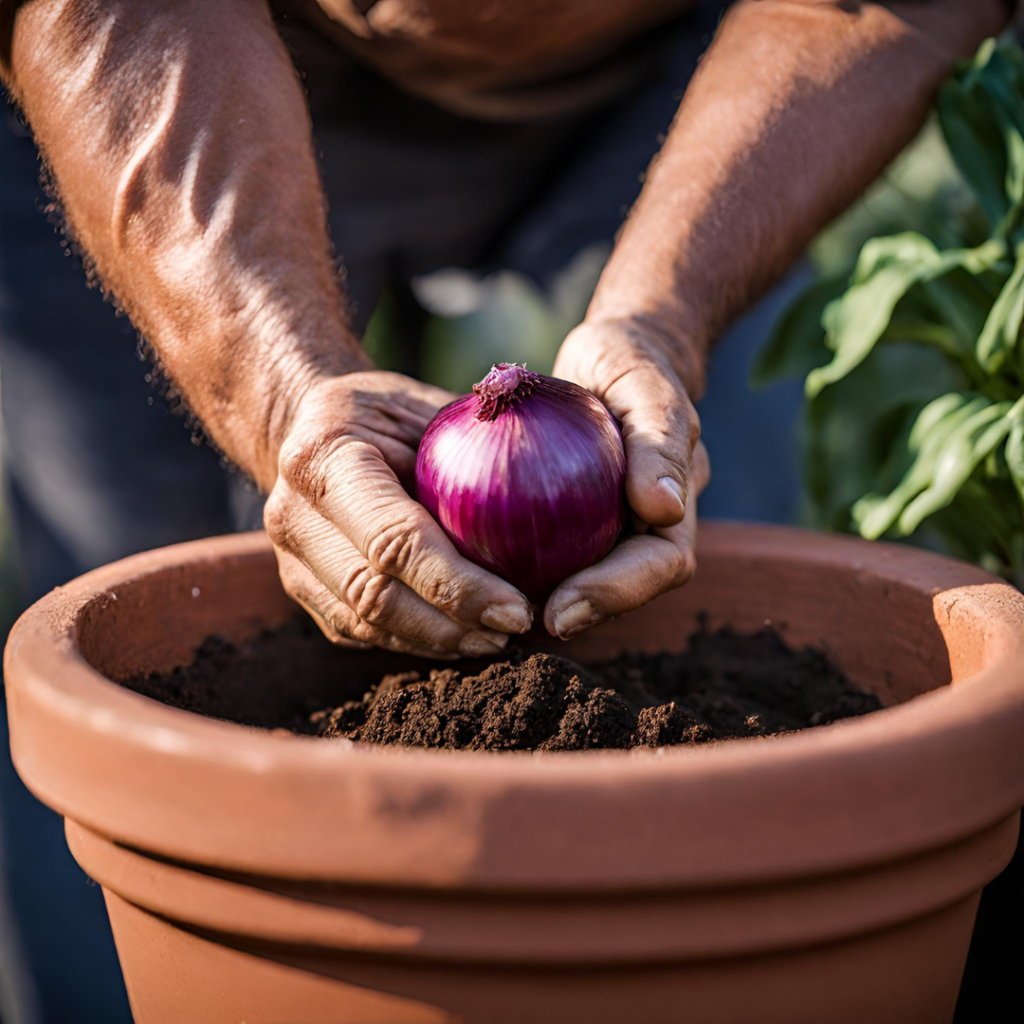
So, have a pot in mind? Or perhaps you’re considering a shopping trip to pick the perfect one? Whatever you choose, just remember: your onions will thank you for the extra thought you put into their new home.
Prepping the Ideal Soil Mix
Your container is ready, and so is your enthusiasm. But before you get your hands dirty, let’s ensure the soil is just right. You see, the soil is like the bed for your onion bulb. It needs to be cozy, nutritious, and just perfect.
Understanding the Soil Components
- Potting Soil: This is the primary component. A good potting soil is light, well-draining, and rich in organic matter. It serves as the base for your mix.
- Organic Compost: Compost adds those essential nutrients that onions crave. It’s like giving your onions a gourmet meal every day.
- Loamy Soil: Loamy soil is a balanced mix of sand, silt, and clay. It’s the Goldilocks of soils – not too dense, not too sandy, just right.
The Perfect Mix Ratio
For optimal growth, aim for a mix of two-thirds potting soil and one-third organic compost. This combination ensures the soil retains soil moisture without getting too soggy. Plus, it provides the nutrients essential for healthy bulb formation.
Moisture is Key
While onions aren’t too fussy, they do like their soil to be consistently moist. But remember, there’s a fine line between moist and waterlogged. Always do the finger test. Insert your finger up to an inch into the soil. If it feels dry, it’s time to water.
So, got your soil ingredients ready? Mixing soil might not be a baking show, but think of it as whipping up a gourmet meal for your onions. And trust me, they’ll reward you with some plump bulbs for all your hard work.
Grow Onions from Seed or Choose Onion Sets?
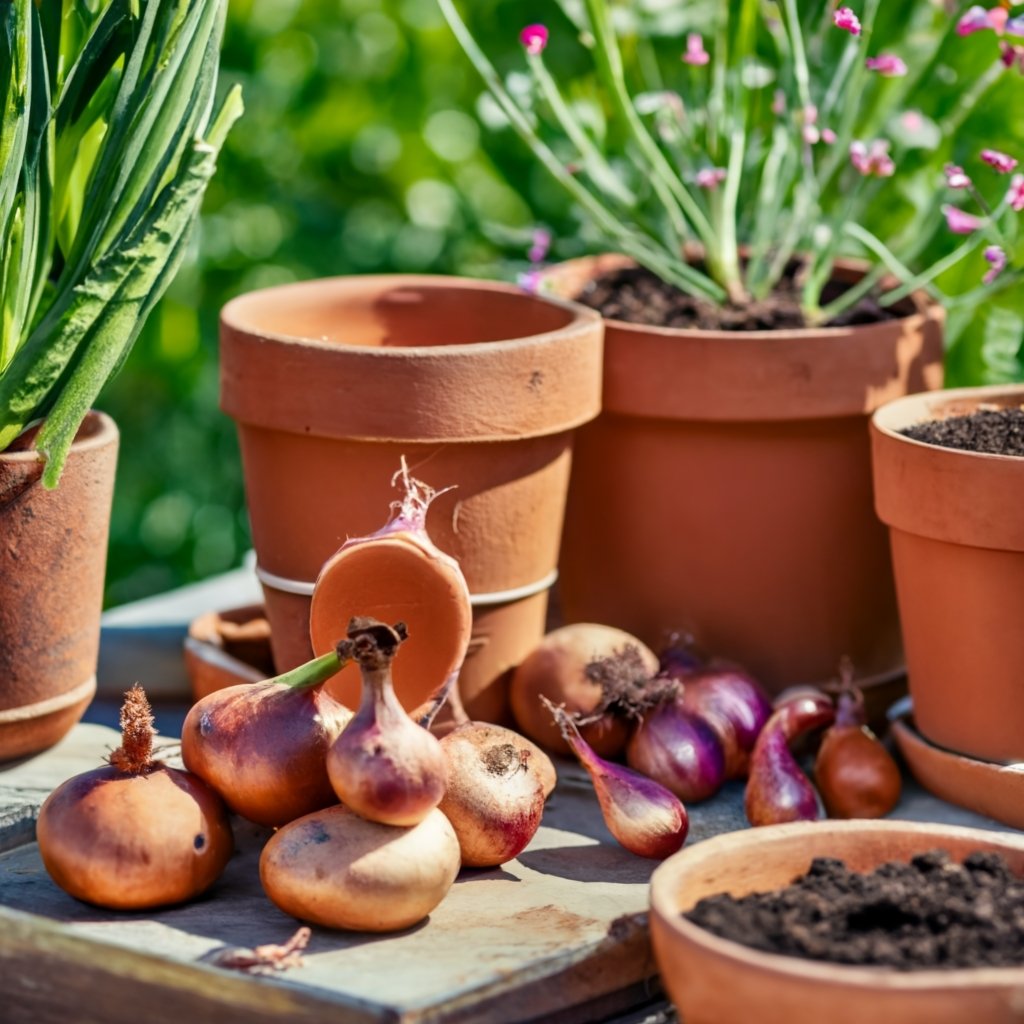
So, you’re all set to plant onions in your perfectly prepped container. But here comes the big question: Do you start with seeds or jump right in with sets? Let’s break it down.
Onions from Seed: The Pros and Cons
Pros:
- Variety: With seeds, the world is your oyster. There’s a vast selection of onion varieties available.
- Cost-Effective: Seeds are generally cheaper than sets. If you’re on a budget, this might be the way to go.
Cons:
- Time: Patience is a virtue. Growing onions from seed takes longer than sets. You’re looking at a longer wait before you see those bulbs forming.
- Care: Seeds require a bit more TLC in the initial stages. Proper spacing, depth, and regular watering are crucial.
Onion Sets: The Quick Route
Pros:
- Speed: Want a head start? Sets are young, tiny bulbs ready to grow. They’ll get you to harvest quicker.
- Simplicity: Less hassle with germination and thinning out. Just plant and watch them grow.
Cons:
- Limited Choices: Your variety options might be a tad limited with sets.
- Bolting Risk: Sometimes, sets can bolt (flower prematurely), which isn’t ideal for bulb growth.
Alright, decision time! Seeds or sets? Think about your goals. Are you in it for the experience and variety? Seeds might be your pick. In a bit of a hurry or prefer a straightforward approach? Go with sets.
Grow Onions in Containers: Planting Guide
So you’ve got your container and your soil ready. Now, the fun part: planting! But wait, how many onions can you fit in your pot? And does it differ if you’re using seeds or sets? Let’s get those green thumbs working!
Onions per Container: A Handy Guide
The number of onions you can plant in a container depends on the container’s size and whether you’re using seeds or sets. Here’s a quick table to guide you:
| Container Diameter | Seeds | Sets |
|---|---|---|
| 20 cm (8 inches) | 3-4 | 2-3 |
| 30 cm (12 inches) | 5-7 | 4-5 |
| 40 cm (16 inches) | 8-10 | 6-8 |
Remember, it’s always better to give your onions a bit more space than to overcrowd them. Crowding can inhibit bulb growth, and we don’t want that!
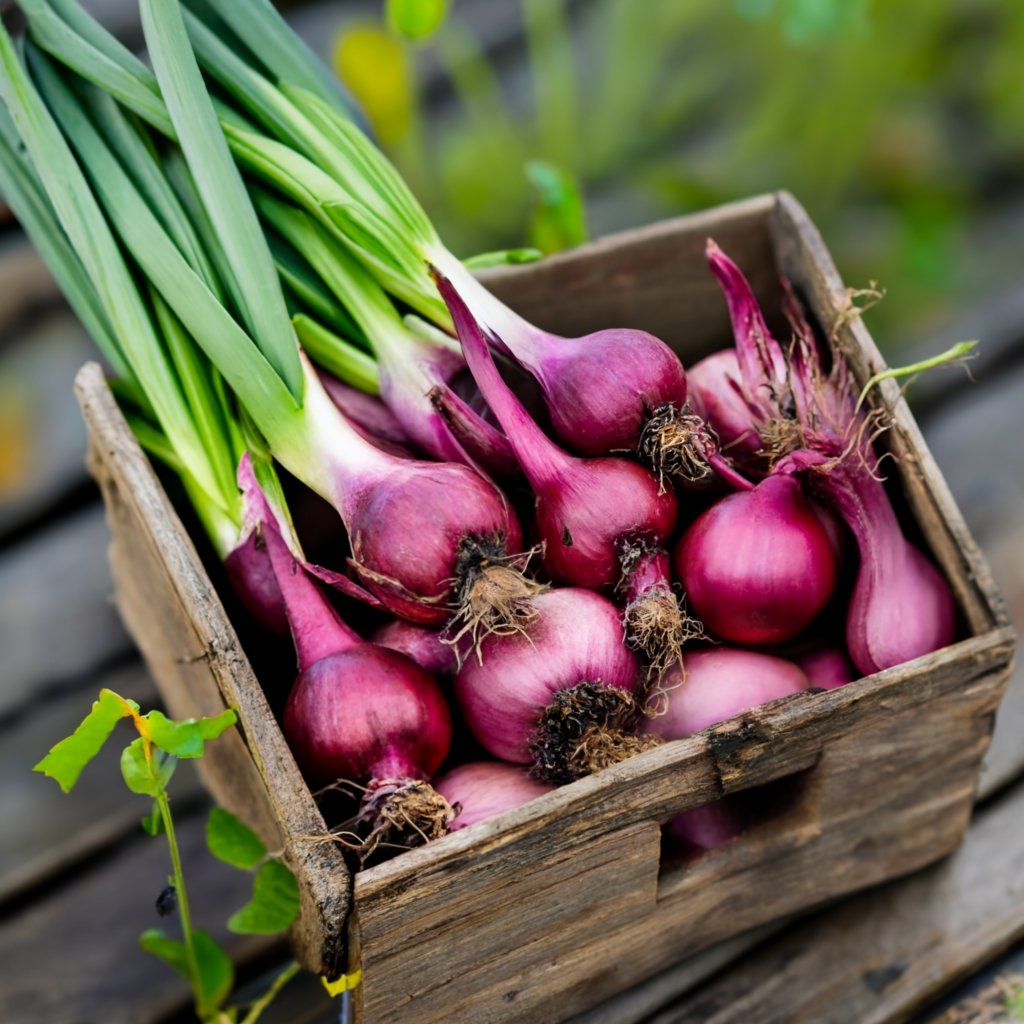
Planting Seeds vs. Sets in Containers
Seeds:
- Depth: Plant your seeds about 1 cm (0.5 inches) deep.
- Spacing: Aim for at least 5 cm (2 inches) between seeds. This ensures each onion has ample space to grow.
- Care: Water gently after planting to ensure the soil is moist but not drenched.
Sets:
- Depth: Push the sets into the soil, so they’re just covered. About 2 cm (1 inch) deep should do.
- Spacing: Keep a gap of about 7-10 cm (3-4 inches) between each set.
- Care: Water them in, but be gentle. Sets are a little more robust than seeds, but they still need some TLC.
A Few Tips to Keep in Mind
- Ensure your container has good drainage. Onions dislike waterlogged soil.
- Place your container in a sunny spot. Onions thrive with at least 6 hours of sunlight daily.
- Rotate your container occasionally. This ensures all onions get equal sun exposure.
Ready to plant? Whether you choose seeds or sets, with the right care, your container-grown red onions will be thriving in no time!
Crafting the Right Watering Routine
Watering isn’t just about splashing some H2O onto your plants and calling it a day. Especially when you’re growing red onions in containers. Too little or too much water, and you could be waving goodbye to a bountiful harvest. So, how do you strike the right balance?
Understanding Container Needs
Containers, unlike garden beds, have limited soil moisture reserves. This means they can dry out faster, especially on those scorching summer days. But don’t reach for that watering can just yet! Over-watering is a common pitfall in container gardening.
Signs to Watch Out For
- Surface Dryness: If the top inch of the soil feels dry to the touch, it’s time to water.
- Lighter Container: Over time, you’ll notice your container feels lighter when it needs watering.
- Wilting Leaves: If your onion leaves droop during the cooler parts of the day, they’re probably thirsty.
The Watering Routine
- Morning Mists: It’s best to water your onions in the early morning. This reduces water loss due to evaporation and keeps the foliage dry, which helps prevent diseases.
- Deep Soaks: Give your onions a thorough soak. Ensure the water reaches the deeper soil layers, encouraging deep root growth.
- Drainage Check: Remember those drainage holes in your container? Make sure they’re not blocked. This will prevent waterlogging and root rot.
Remember, onions require consistent moisture, especially during bulb formation. So, keep an eye on that soil and adjust your watering routine as needed. And if you’re ever in doubt, the finger test never fails!
Onion Growing: Nurturing to Maturity
Growing red onions in containers is akin to guiding a young protege to greatness. With the right care, those small bulbs evolve into mature, flavorful wonders. So, how do you ensure your onions don’t just grow, but grow best?
Consistent Care is Key: Onions are a tad particular. They thrive on routine. A consistent watering schedule, regular checks for pests, and the right amount of sunlight? That’s the trio they adore.
Know Their Sun Needs: Some plants might enjoy a shade retreat now and then, but not onions. They’re full-on sun enthusiasts. Aim for 6-8 hours of direct sunlight daily. Got a sunlit balcony or patio? That’s your onion container’s stage.
The Right Feed for Healthy Onions: Onions aren’t too picky about their nutrition. However, during the growing season, a balanced liquid fertilizer every few weeks does wonders. Think of it as their growth-boosting smoothie. And don’t forget about the pH! Onions prefer slightly acidic to neutral pH levels, so aim for a pH between 6.2 and 6.8.
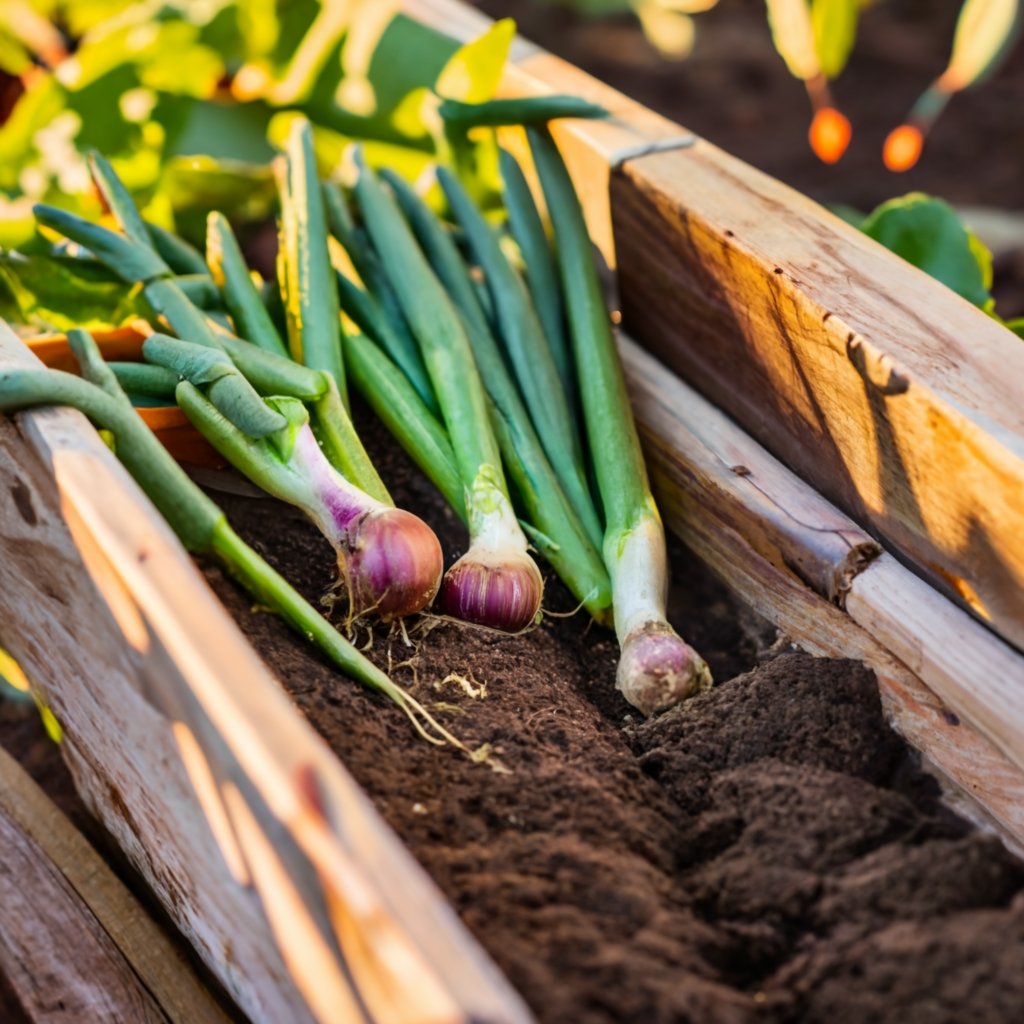
Watch Out for Unwanted Guests: Pests can sometimes crash your onion party. Regularly inspect the leaves and soil for signs of these invaders:
- Onion Root Maggots: These pests love the bulbs. Look for wilted plants as a sign.
- Onion Thrips: Tiny but troublesome, they can cause silver streaks on the leaves.
- Cutworms: These critters might cut your young onion plants at the base.
Spotting them early is the key. Catch them in the act, and you can save your onions from unwanted drama.
Remember, with onions, it’s about the journey and the destination. The nurturing process is rewarding, and the end result? A container brimming with mature, juicy red onions.
Growth Stages of Onions in Pots
Just like us humans, the humble onion plant goes through various stages in its life. When onions grown in containers embark on this journey, knowing what to expect can make your gardening experience even more delightful.
- Sprouting: The First Hello: This is when the tiny green shoots peek from the soil. It’s the onion’s way of saying, “Hey there! Thanks for planting me.”
- Leaf Development: The Growing Up Phase: Each leaf that forms will eventually become a ring of the onion bulb. So more leaves mean a bigger bulb. And who doesn’t love a big, juicy onion?
- Bulb Formation: The Magic Happens: This is when things get real. As daylight increases, onions form bulbs. The size of the bulb is influenced by the number of leaves. Remember our chat about leaves? Yep, it all adds up.
- Maturation: The Final Bow: The onion’s foliage will start to weaken and fall over. It’s the plant’s way of saying, “I’m ready!” This is your cue to start thinking about harvest time.
- Time to Harvest: Recognizing the Signs: Growing red onions in containers is not just about space efficiency or aesthetics; it’s also about ease, especially when it’s harvest time. Let’s explore the signs that your container-grown onions are ready for the grand finale!
- Toppling Tops: One clear sign that your onions are ready to be harvested is when their tops begin to lean and eventually fall over. It’s like the onion giving a courteous bow, signaling its readiness.
- Shedding the Outer Skin: A mature onion will start shedding its outermost skin. It’s as if the onion is peeling off its layers, preparing for the world outside the pot.
- Firm to the Touch: Gently press your onion. If it’s firm and not squishy, that’s your cue. Remember, be gentle; we’re not making onion juice just yet.
- Golden Hue: The onion’s skin will adopt a golden, papery texture. It’s the onion’s gold star of maturity.
- Ease of Container Harvesting: Here’s the cherry on top: with container gardening, there’s no digging deep into the ground. Simply tip the container, and your onions are ready to be plucked out, soil-free and clean. The convenience is unbeatable!
Storing and Enjoying Your Red Onions
You’ve followed the steps, nurtured your red onions in containers, and now you’ve got a fresh batch of crunchy bulbs waiting to be enjoyed. But before you dive into that delicious onion salad or caramelized onion pizza, let’s talk about the all-important step: storage. Here’s how to make the most of your harvest and enjoy those onions for longer.
The Art of Curing
Before storing, your onions need a little spa treatment called curing. Curing onions enhances their flavor and extends their shelf life. Here’s a quick guide:
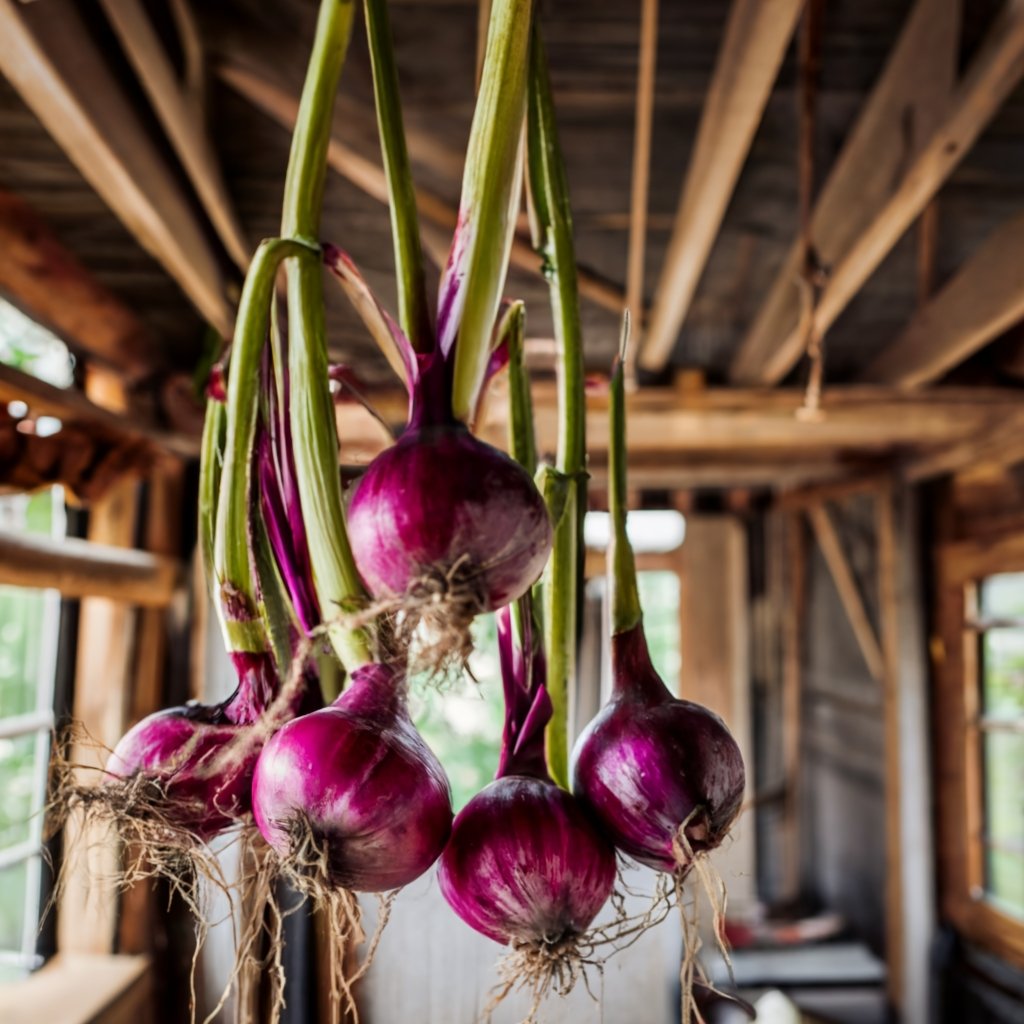
- Lay your onions out in a single layer in a well-ventilated area, like a porch or a shed.
- Keep them out of direct sunlight. Think of it as letting them sunbathe with a shade.
- Let them chill there for about 10-14 days. This helps the outer layers dry out and form a protective skin.
Now, can you see that golden, papery texture? That’s when you know they’re perfectly cured.
Storing Them Right
Once cured, it’s time to store. For store cured onions:
- Use mesh bags or baskets to ensure airflow.
- Keep them in a cool, dark place. Basements or cellars are ideal.
- Check occasionally for any signs of mold or sprouting and remove those onions to keep the rest fresh.
Did you know? Properly stored onions can last for several months!
Remember, growing your own red onions in containers is not just about the joy of gardening, but also about savoring every bite. With proper storage, you ensure that every dish benefits from the fresh, pungent flavor of your home-grown red onions.
